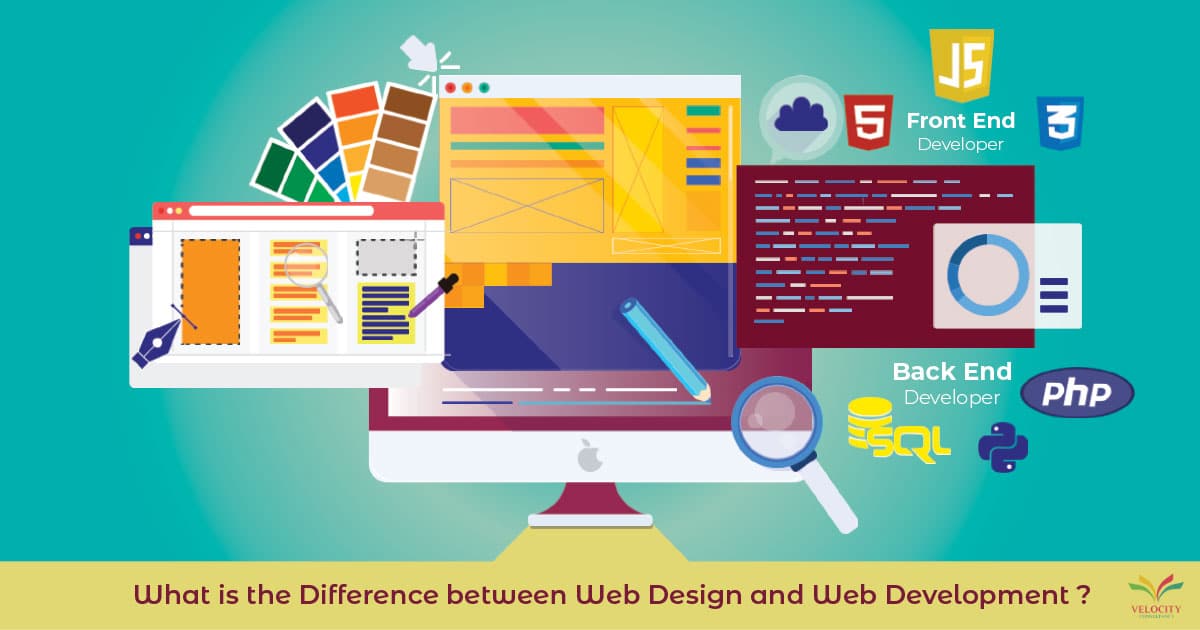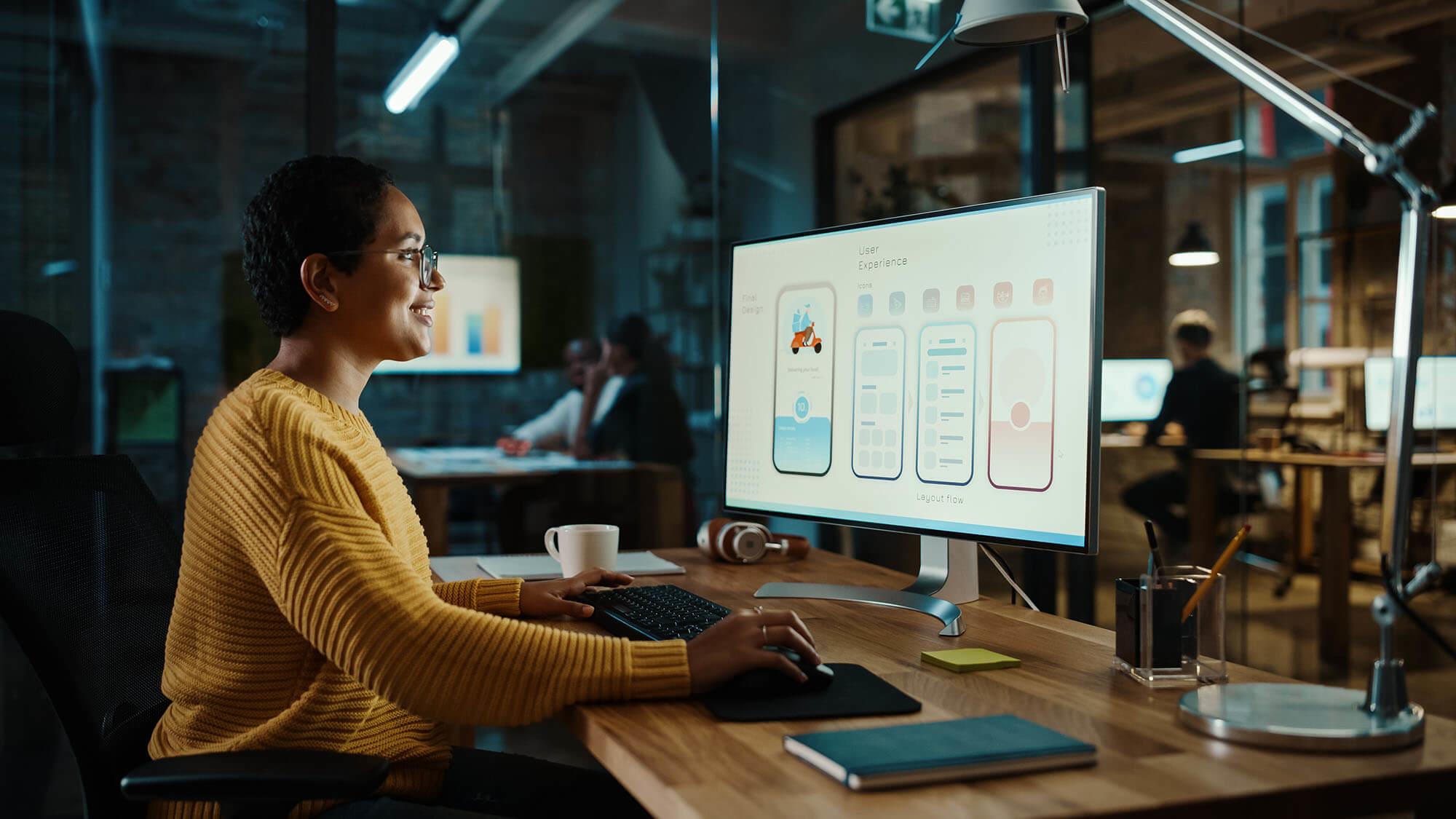Web Design London Ontario Experts for Custom Projects
Web Design London Ontario Experts for Custom Projects
Blog Article
Exactly How to Effectively Integrate Looks and Performance in Website Design
When creating a website, you need to strike an equilibrium in between aesthetic appeals and performance. It's not practically looking excellent; your layout must also serve an objective and overview individuals efficiently. By concentrating on simpleness and user-friendly navigating, you can create an engaging experience. However what components absolutely enhance usability while preserving visual charm? Let's explore the crucial principles that can cause an unified blend of beauty and function.
Understanding the Relevance of Visual Appeals and Functionality
When you create a web site, recognizing the balance in between appearances and functionality is vital for creating an efficient individual experience. An aesthetically attractive site grabs focus, yet it's the performance that maintains customers involved. If your site looks terrific yet is difficult to browse, site visitors will swiftly weary and leave.Consider your target audience and what draws them in. You desire to develop a design that reflects your brand name while making sure ease of use. Structured formats, instinctive navigation, and clear telephone calls to activity can enhance both aesthetic appeals and performance.

Concepts of Effective Website Design
To develop an effective internet style, you require to follow several vital principles that enhance both individual experience and visual charm. Focus on simpleness; a tidy layout aids customers browse quickly. Utilize a regular color pattern and typography to maintain coherence throughout your website. This promotes knowledge and trust.Next, assure your layout is receptive. Customers accessibility sites on various tools, so your design ought to adjust effortlessly. Pay attention to visual hierarchy; highlight crucial components with shade, positioning, or size to direct customers' focus.Finally, include enough white area. It prevents clutter and makes web content more absorbable. Keep in mind, effective website design balances visual appeals and performance, so every design option should offer an objective. By adhering to these concepts, you'll develop a website that's not only aesthetically appealing yet likewise user-friendly, ultimately keeping visitors involved and motivating them to return.
Focusing On Individual Experience
When prioritizing customer experience, you'll want to begin by understanding what your customers absolutely need. Streamlining navigation layout can make a significant difference in exactly how quickly they discover what they're trying to find. Additionally, improving visual hierarchy assists direct their interest to one of the most essential components on your site.
Recognizing Individual Demands
Recognizing individual needs is essential for producing an interesting web experience that keeps visitors coming back. To achieve this, you need to recognize the goals and preferences of your target audience. Begin by performing customer research study, like meetings or studies, to collect understandings on what individuals value most. When engaging with similar websites, pay attention to their pain factors and challenges. This information enables you to customize your design, making certain performance aligns with customer expectations. Additionally, take into consideration producing individual personas that represent different sections of your audience, helping you picture their requirements during the layout process. When you prioritize recognizing individual needs, you produce a site that not only looks fantastic however additionally delivers a smooth, delightful experience that cultivates loyalty.
Simplifying Navigating Design

Enhancing Aesthetic Power Structure
A solid visual pecking order is necessary in leading users through your website and guaranteeing they involve with key material. To accomplish this, make use of spacing, color, and dimension purposefully. Make crucial elements like headings bigger and bolder than body text, drawing focus instantly. Utilize contrasting colors to highlight contact us to activity, encouraging clicks. In addition, employ enough white space to different areas, making material absorbable and inviting.Consider the circulation of info; prepare components logically, leading users' eyes from one indicate the next. Usage visual cues, like arrowheads or lines, to route focus. By prioritizing visual hierarchy, you boost customer experience and boost the possibility of conversions, guaranteeing your site is both aesthetically pleasing and functionally effective.
Shade Theory and Its Effect on Functionality
While choosing the best shades for your web site might look like a minor detail, it considerably affects use and customer experience. Color affects exactly how customers perceive info and can impede or enhance navigation. Contrasting colors can assist vital components stand out, making it easier for visitors to locate what they need.Additionally, take into consideration the psychology of shades: blue typically motivates trust fund, while red develops urgency. Knowing your target market can assist your color choices, ensuring they resonate well.Moreover, regular color pattern help build brand name identification, making your site much more memorable. Be careful-- also numerous shades can bewilder users. Stick to a restricted scheme that matches your material and maintains clarity.Incorporating access is additionally vital; validate your shade combinations get along for those with aesthetic problems. By attentively using color theory, you'll improve usability view it now and create an extra interesting customer experience.
Typography: Harmonizing Style and Readability
Color selections established the phase for your web site, yet typography plays an equally vital function in boosting user experience. You want your text to communicate plainly while additionally reflecting your brand's individuality. Begin by picking fonts that are not only eye-catching however additionally understandable. Sans-serif fonts frequently work well for digital displays, as they're easier to check out at various sizes.Maintain a power structure by making use of different font sizes and weights; this overviews customers through your material effortlessly. Think about line spacing and letter spacing; as well tight can frustrate readers, while too loose can interfere with the circulation. Limit your font style choices to 2 or 3 to keep the style cohesive.Finally, constantly Read Full Article examine your typography throughout different gadgets and web browsers. What looks great on one screen may not on another. Stabilizing style with readability warranties that your message resonates, keeping your target market informed and involved.
Responsive Design: Making Appearances Deal With All Gadgets
To ensure your internet site looks excellent on any kind of device, you'll need to accept receptive layout principles. This technique guarantees your site adapts to different screen sizes, offering an ideal individual experience. Begin by making use of fluid grids and adaptable photos that scale perfectly. As opposed to taken care of measurements, select percents and loved one units, enabling your layout to readjust dynamically.Next, apply media queries in your CSS. These let you apply different designs based on tool characteristics, like screen size. By doing this, you can maintain aesthetic charm while guaranteeing functionality.Don' t forget touch targets; make specific buttons and links are very easy to touch on smaller sized displays. Prioritize essential web content, so customers can quickly navigate your site no matter their gadget. By concentrating on these aspects, you'll develop an interesting, visually appealing experience that meets the requirements of all users, whether they get on a mobile phone, desktop, or tablet .
Performing Use Testing for Continuous Improvement
To enhance your website design, you need to establish clear usability site link objectives that line up with individual needs. By conducting customer examinations, you can collect valuable feedback on just how actual people engage with your website. Analyzing these results will certainly aid you make informed enhancements and create a much more effective individual experience.
Defining Use Goals
While appearances can draw users in, defining usability objectives is necessary for guaranteeing their experience continues to be satisfying and smooth. Beginning by identifying what you want customers to achieve on your site (website design london Ontario). Consider their jobs, habits, and needs. Are they looking for information, making a purchase, or enrolling in an e-newsletter? Develop clear benchmarks to gauge success, like job conclusion prices or time on task. Focus on instinctive navigating, accessible content, and receptive layout to enhance functionality. Regularly review these goals as individual assumptions evolve. By defining usability objectives, you develop a structure for assessing and boosting your website's performance. This concentrate on use not just enhances user contentment but likewise strengthens the total efficiency of your layout
Carrying Out Individual Examinations
Carrying out customer examinations is vital for improving your website and guaranteeing it fulfills your audience's demands. Start by determining your target users and developing a test strategy that details your purposes. Use a mix of measurable and qualitative techniques, such as studies, meetings, and task-based monitorings, to gather extensive comments. Invite participants to browse your website while you observe their interactions and keep in mind any type of problems they encounter. Urge open dialogue to capture their thoughts and sensations regarding the layout and functionality. Keep sessions short and focused, ensuring you cover key locations without frustrating users. Make certain to record all findings, as this information will certainly be indispensable for making enlightened style decisions that boost both aesthetic appeals and use.
Analyzing Test Outcomes
How can you properly analyze the outcomes of your functionality tests to drive continual enhancement? Beginning by classifying comments into usual motifs. Seek patterns in user habits that highlight discomfort points or areas for improvement. Use measurable information, like job conclusion rates and time on task, to determine usability fairly. Do not forget to think about qualitative understandings from user comments; they typically expose underlying concerns that numbers can't reveal. Focus on one of the most impactful searchings for and develop workable items for your design team. Bear in mind, it's about repeating-- execute adjustments, after that examination once more. This cycle of testing, analyzing, and refining assists you balance aesthetic appeals and performance, ensuring your web site fulfills customer demands properly while preserving aesthetic allure.
Often Asked Questions
How Do I Pick the Right Color Scheme for My Internet site?
To pick the ideal shade scheme for your internet site, consider your brand's individuality, target audience, and psychological impact (website design london Ontario). Use shade psychology, produce consistency, and assurance readability. Examination combinations to see what reverberates best with visitors
What Tools Can Help With Website Design Aesthetic Appeals and Capability?
You can use devices like Adobe XD, Figma, and Map out to enhance your website design's aesthetics and capability. These platforms provide instinctive interfaces, cooperation functions, and pre-made layouts to streamline your imaginative process and enhance your designs.
How Can I Integrate Animations Without Endangering Functionality?
To integrate computer animations without jeopardizing capability, focus on subtle impacts that enhance user experience. Use CSS animations for smoother communications, assurance quick lots times, and test on various devices to maintain efficiency while including aesthetic allure.
What Prevail Mistakes to Prevent in Web Style Visual Appeals?
When developing, avoid chaotic designs, poor shade selections, and inconsistent typefaces. Don't forget mobile responsiveness, as it can estrange users. Validate your design aligns with your brand, creating a smooth experience that involves site visitors efficiently.
How Typically Should I Update My Internet site's Style for Ideal Aesthetics?
You need to update your web site's layout every 1-2 years to stay up to date with trends and maintain ideal aesthetic appeals. Routinely restoring visuals aids engage visitors and assurances your website stays user-friendly and attractive. When you create a site, understanding the balance between aesthetics and capability is crucial for developing an effective user experience. To create an effective internet style, you need to stick to several essential principles that boost both individual experience and visual allure. Customers accessibility internet sites on numerous gadgets, so your design must adjust perfectly. When focusing on individual experience, you'll want to begin by recognizing what your customers absolutely require. Start by carrying out user research study, like surveys or meetings, to collect insights on what users worth most.
Report this page